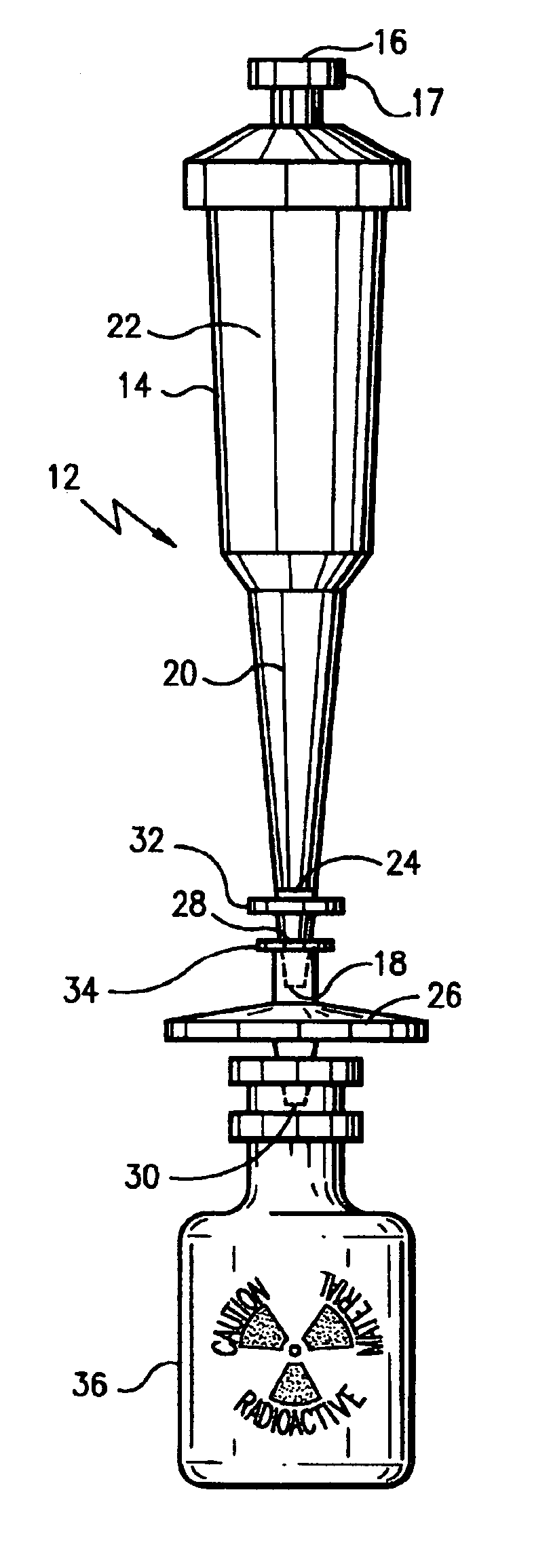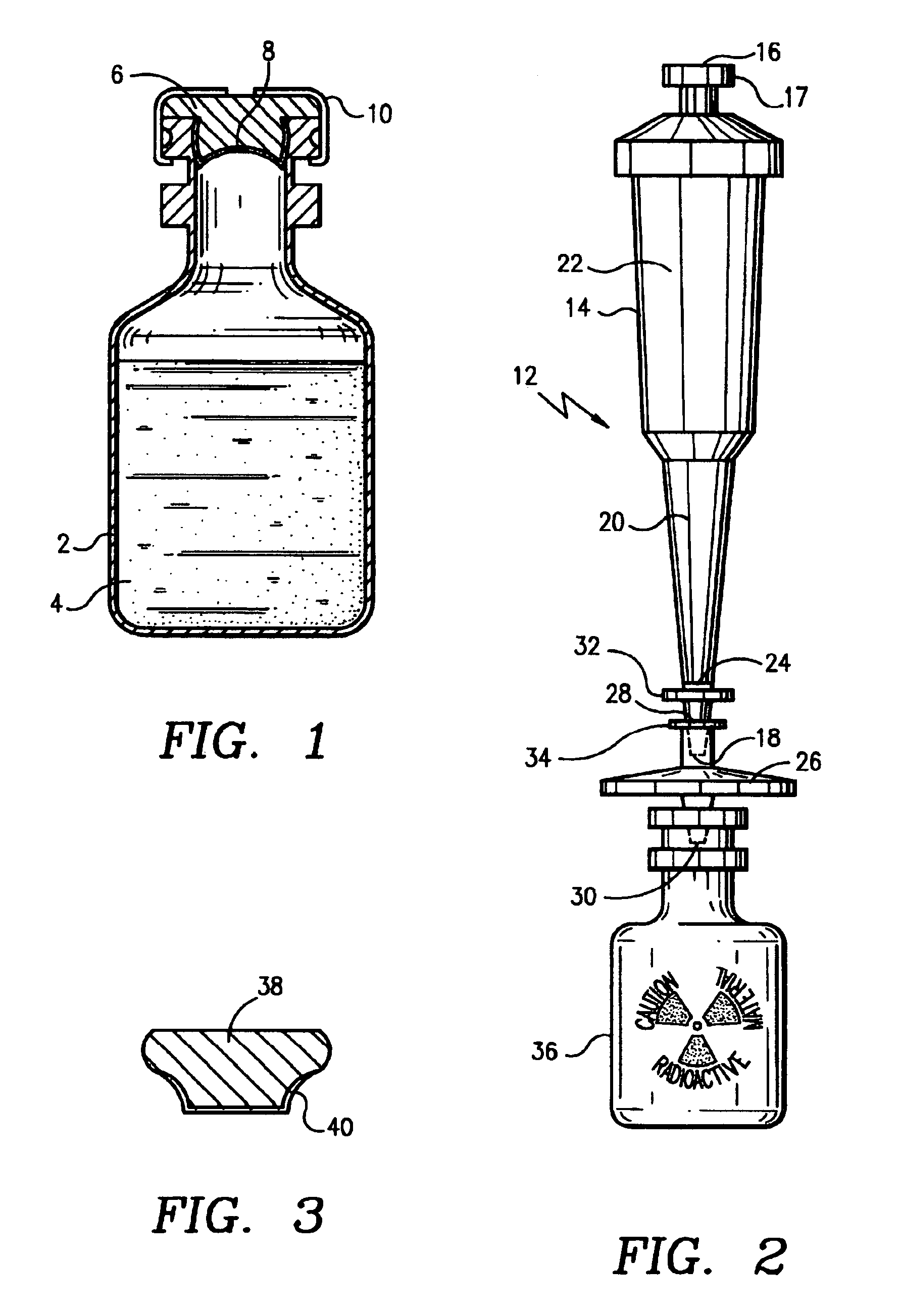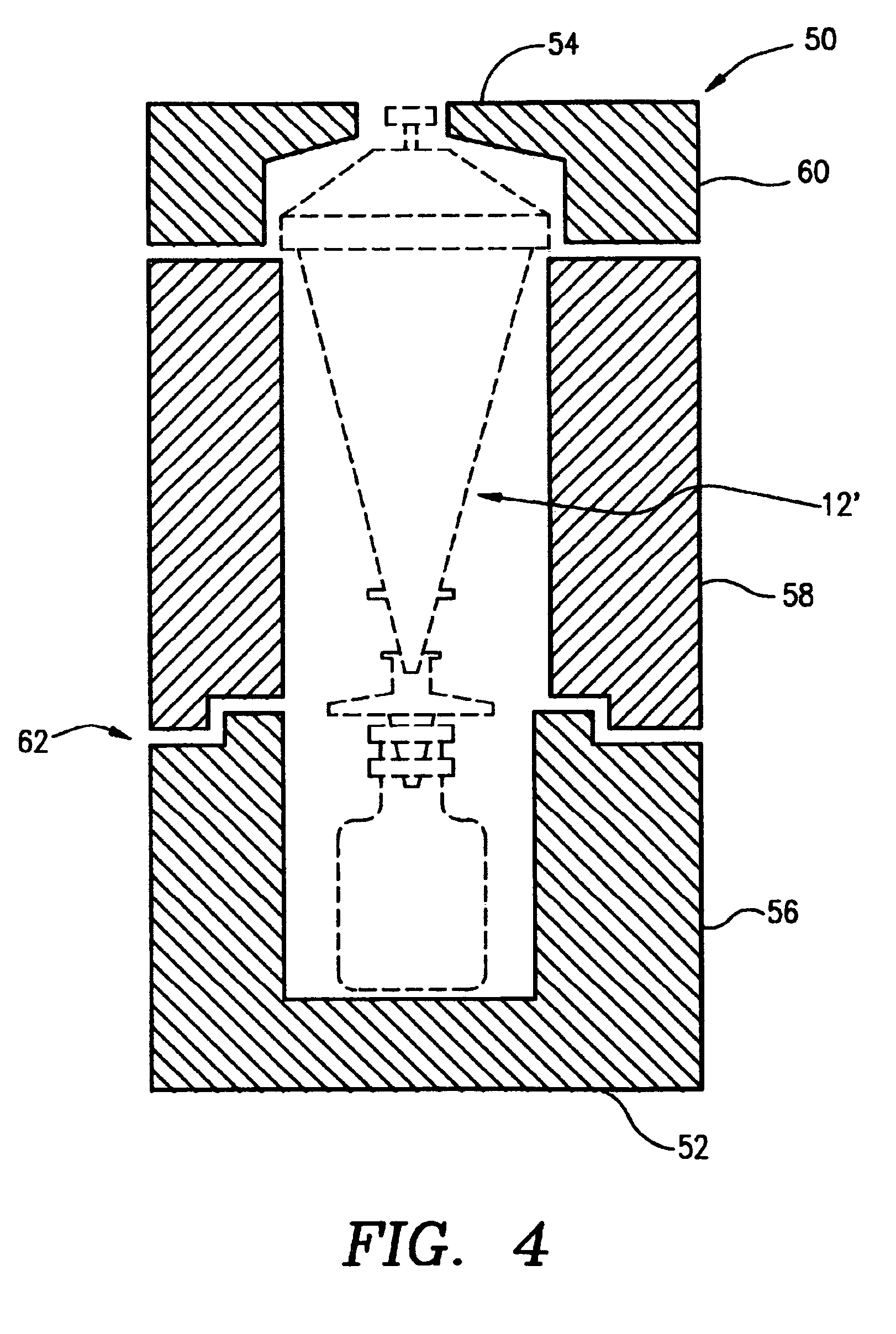Purification of Lutetium 177
a technology of lutetium 177 and purification process, which is applied in the field of chemical purification process, can solve the problems of unusable metal cation contaminants, including hafnium, and achieve the effect of less waste of lutetium-177 and easy measurement of the amount of lutetium-177
- Summary
- Abstract
- Description
- Claims
- Application Information
AI Technical Summary
Benefits of technology
Problems solved by technology
Method used
Image
Examples
example
General
[0035]Care should be taken to insure that the work environment including the reagents, column with anion exchange resin, and process equipment such as glassware, if used, and plasticware be essentially hafnium-free. It is preferred to avoid glassware, as well as metals of any type, including syringe needles.
[0036]Extremely pure water and acids having a hafnium content of well below 1 ppb should be used. Handling should be carried out in a sterile flow hood. Glassware, if used, should be acid washed and plasticware, preferably polypropylene, should be metal free. Gloves should be used in handling the equipment and test tubes and containers should be kept covered to prevent airborne contamination.
[0037]Analysis for hafnium may be done by atomic absorption technique such as by electrothermal atomic absorption spectrophotometry (ETAAS). The principle of this technique is based upon the absorption of light at element-specific wavelengths (resonance line) for neutral atoms in the g...
PUM
| Property | Measurement | Unit |
|---|---|---|
| volume | aaaaa | aaaaa |
| volume | aaaaa | aaaaa |
| size | aaaaa | aaaaa |
Abstract
Description
Claims
Application Information
 Login to View More
Login to View More - R&D
- Intellectual Property
- Life Sciences
- Materials
- Tech Scout
- Unparalleled Data Quality
- Higher Quality Content
- 60% Fewer Hallucinations
Browse by: Latest US Patents, China's latest patents, Technical Efficacy Thesaurus, Application Domain, Technology Topic, Popular Technical Reports.
© 2025 PatSnap. All rights reserved.Legal|Privacy policy|Modern Slavery Act Transparency Statement|Sitemap|About US| Contact US: help@patsnap.com



